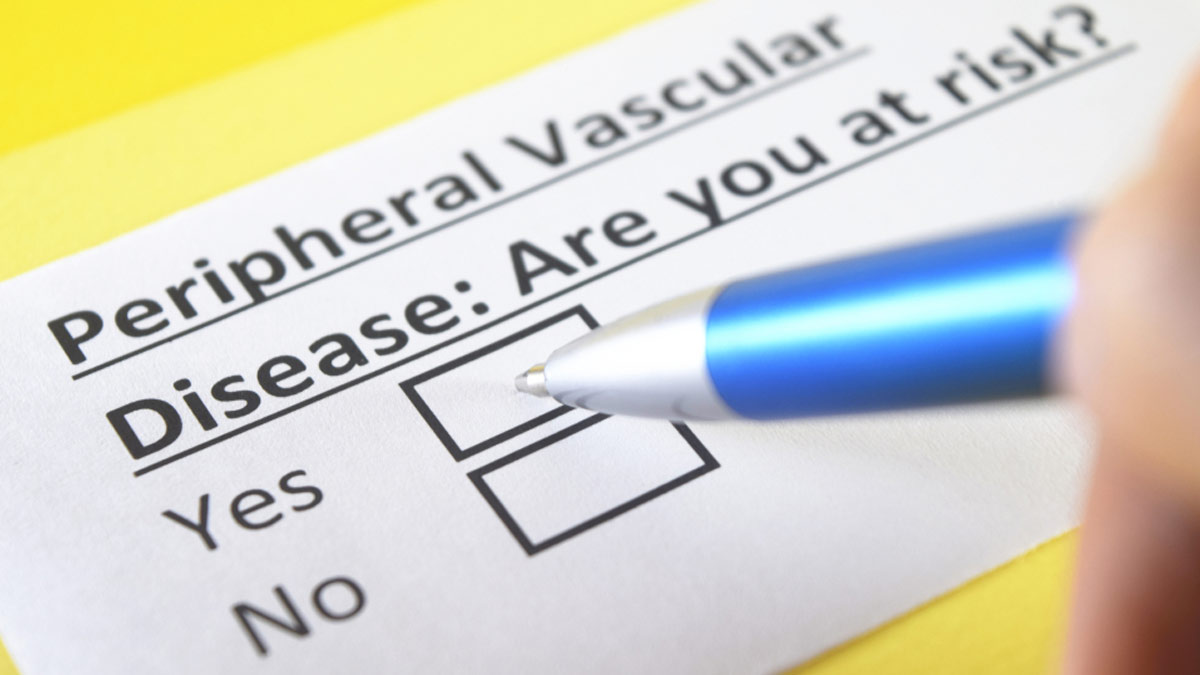
Do you experience leg pain, cramping, numbness, or weakness, especially during physical activity? This may indicate a health condition known as Peripheral Vascular Disease (PVD), which is characterised by the narrowing or blockage of blood vessels that supply blood to the extremities, most commonly the legs. This constriction impedes the normal blood flow, leading to a range of symptoms and potential complications. We spoke to Dr Dharav Kheradia, Consultant Neuro and Vascular Interventional Radiologist, Wockhardt Hospitals, Mumbai Central, who listed the symptoms, causes, diagnosis, and treatment options for PVD.
According to Johns Hopkins Medicine, PVD can impact any blood vessel beyond the heart, encompassing arteries, veins, and lymphatic vessels. Consequently, organs reliant on these vessels, like the brain or legs, may experience insufficient blood flow for optimal function. It is usually the legs and feet that suffer the most from this condition.
Symptoms of Peripheral Vascular Disease
According to the Centers for Disease Control and Prevention (CDC), more than 20% of individuals who are 80 years or older are affected by PVD. Dr Kheradia listed its symptoms as follows:

- Pain or Claudication: Individuals with PVD often experience discomfort, cramping, or pain in their legs, particularly during physical activity, such as walking or exercise. This symptom, known as claudication, occurs due to inadequate blood supply to the leg muscles.
- Pain in the Foot: Pain may also be felt in the feet, often described as aching or throbbing, indicating compromised blood flow to the lower extremities.
- Non-healing Wounds or Ulcers: Persistent wounds or ulcers on the toes, feet, or legs that fail to heal properly are common signs of PVD. Reduced blood flow impairs the body’s ability to repair damaged tissues, leading to slow wound healing.
- Coldness and Colour Changes: Decreased circulation can result in cold sensations in the feet and changes in skin colour, such as pallor or blueness, indicating poor blood perfusion.
Causes of Peripheral Vascular Disease

Atherosclerosis
“The primary cause of PVD is atherosclerosis, a condition characterised by the buildup of plaque within the arteries, narrowing the vessel lumen and restricting blood flow. Risk factors for atherosclerosis include diabetes, hypertension, smoking, high cholesterol levels, and a family history of vascular disease”, said Dr Kheradia.
Blood Clots or Emboli
Blood clots or embolus originating from the heart can obstruct peripheral arteries, leading to reduced blood flow to the legs and feet. Heart conditions, such as atrial fibrillation or heart valve disorders increase the risk of embolic events.
Also Read: Leg Cramps During Walking? Expert Explains Claudication, Its Symptoms, Causes, And Treatment
Diagnosis of Peripheral Vascular Disease

You can avoid complications of PVD with the help of an early diagnosis. Here are some ways to diagnose PVD, as listed by the expert:
- Physical Examination: A thorough physical examination, including assessment of pulses, blood pressure in the legs, and evaluation of symptoms, is essential for diagnosing PVD.
- Ankle-Brachial Index (ABI) Test: This non-invasive test compares blood pressure measurements in the ankles and arms to assess the degree of peripheral artery disease.
- Ultrasound/Doppler Imaging: Imaging studies, such as ultrasound or doppler imaging, are used to visualise blood flow and detect any blockages or narrowing within the blood vessels.
- Angiography: Advanced imaging techniques like CT, MRI, or Digital Subtraction Angiography (DSA) provide detailed images of the blood vessels, aiding in the precise localisation of arterial lesions.
- Blood Tests: Blood tests are conducted to evaluate cholesterol levels, blood sugar levels (diabetes assessment), and inflammation markers, which can indicate underlying vascular pathology.
Treatment of Peripheral Vascular Disease
- Lifestyle Modifications: Lifestyle changes, including smoking cessation, regular exercise, and adopting a healthy diet low in saturated fats and cholesterol are fundamental in managing PVD and reducing the progression of atherosclerosis.
- Medications: Pharmacotherapy involves using medications, such as antiplatelet agents, cholesterol-lowering drugs (statins), and antihypertensive medications to manage risk factors and improve blood flow.
- Interventional Procedures: Minimally invasive procedures like angioplasty and stenting are performed to open narrowed or blocked arteries, restoring blood flow to the affected extremities.
- Surgery: In severe cases where arterial blockages are extensive, bypass surgery may be necessary to create alternative pathways for blood circulation, bypassing the occluded vessels.
- Wound Care: Proper wound care is essential for preventing infections and promoting the healing of ulcers or sores, reducing the risk of complications, such as gangrene.
- Amputation: In advanced stages of PVD, where limb-threatening ischemia persists despite intervention, surgical amputation may be required to prevent life-threatening complications and preserve overall health.
Bottomline
Dr Kheradia concluded, “Early diagnosis and comprehensive management of PVD play a pivotal role in preventing debilitating complications, such as tissue damage, chronic ulcers, and limb loss. By addressing underlying risk factors and implementing appropriate treatment strategies, individuals with PVD can effectively manage their condition and improve their quality of life. Regular monitoring and adherence to medical advice are crucial in mitigating the progression of the disease and optimising long-term outcomes.”
[Disclaimer: This article contains information provided by an expert and is for informational purposes only. Hence, we advise you to consult your expert if you notice any problems during pregnancy to avoid any complications.]

